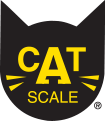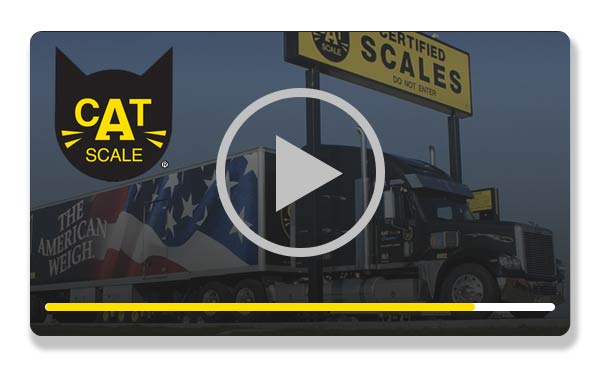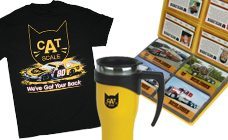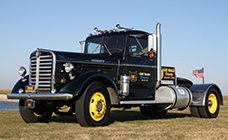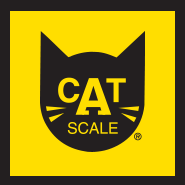- AboutToggle Submenu
- CAT Scale Apps
- CAT Scale LocatorToggle Submenu
- Our GuaranteeToggle Submenu
- How To Weigh
- Videos, Cards, Merch & MoreToggle Submenu
Videos, Cards, Merch & More
- CAT Scale Home
- >
- Videos, Cards, Merch & More
- >
- 1938 Kenworth Race Truck
1938 Kenworth Race Truck
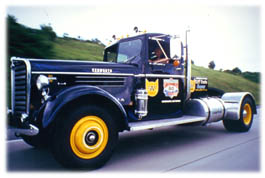 This is the famous Great Race truck sponsored by CAT Scale Company. The truck has participated in a rigorous 4,500 mile, cross-country road rally each year since 1990. Look for the Kenworth at upcoming truck shows.
This is the famous Great Race truck sponsored by CAT Scale Company. The truck has participated in a rigorous 4,500 mile, cross-country road rally each year since 1990. Look for the Kenworth at upcoming truck shows.Great News! CAT Scale is now offering a Limited Edition 1/43 scale collectible replica of the 1938 Kenworth. Reserve yours today!
This 1938 beauty is also featured on our classic t-shirt honoring its longevity and on our new “We’ve Got Your Back” t-shirt.
1938 Kenworth Great Race Stats
2000: Entered as tour vehicle
1999: 1st place, Stage 11, Sportsman Division, Truckin’ Award1996: Truckin’ Award
1995: 3rd place, Sportsman Division
1993: 5th place, Sportsman Division
1990: First Great Race run.The 1938 Kenworth competes in the Sportsman Division and is entry #80. The Kenworth was built on May 7, 1938, and was used as a fire truck in Spokane, Washington until 1970. In 1983 it was fitted with the Supercharged Cummins HBRS. The old Kenworth has a top speed of 70 miles per hour.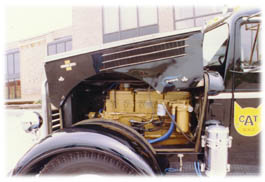
1938 Kenworth Specs
Model: AVS-1 (this is the cab serial number)
Engine: Cummins HBIS-600
Horsepower: 175 hp
Transmission: Brown-Lipe 7440 (4-speed with a 2-speed rear axle)
Wheelbase: 190″
Tire Size: 9:00-20
Clutch: 13″ two plate clutch
Front Axle: 7,000 lbs.
Rear Axle: 14,000 lbs.More About The Engine
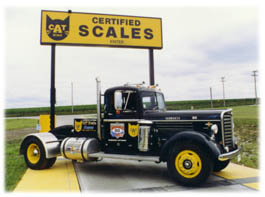
The Kenworth was originally equipped with a Hall Scott model 177 gasoline engine. This engine was replaced with the Cummins, that is currently in the truck, when the truck was first restored prior to CAT Scale Company ownership.
The Cummins is a model HBIS-600 with 175 horsepower at 1800 rpm. The 600 represents the cubic inch displacement of the engine. Right hand rotation. The engine was made on January 31, 1941. It has a belt drive supercharger that turns at 1.8 times crankshaft speed. At 1800 engine rpm it is turning 3240 rpm. The supercharger was made by Schwitzer for Cummins. The supercharger gives the truck its distinct exhaust sound and was the forerunner of turbocharging that is used today.
Quick Links
Video
Latest News
Latest News
-
Dec 12 2024
CAT SCALE OPENS IN BUFFALO, WY
-
Dec 12 2024
CULLMAN, AL CAT SCALE NOW OPEN
-
Dec 12 2024
NEW CAT SCALE OPENS IN FINDLAY, OH
-
Dec 12 2024
CAT SCALE OPENS IN ABERDEEN, MD
-
Dec 11 2024
HATTIESBURG, MS CAT SCALE NOW OPEN
-
Dec 09 2024
NEW CAT SCALE NOW OPEN IN VICTORVILLE, CA
-
Dec 05 2024
CAT SCALE NOW OPEN IN MARATHON CITY, WI
-
Dec 03 2024
MADISON, AL CAT SCALE NOW OPEN
-
Nov 27 2024
NEW CAT SCALE NOW OPEN IN JEAN, NV
-
Nov 26 2024
CAT SCALE OPENS IN MCCALLEN, TX
Testimonials
What People are saying...
-
"Thank you so much for your prompt attention to paying my ticket. It is refreshing to see a company doing what it says without any hidden if, ands or buts."- Donna Reeves
-
"Safety and compliance are critical in today’s competitive market. CAT Scales are easily accessible and guaranteed accurate. Our drivers rely on CAT Scales to help deliver on our promise of Quality..."- Chris Hummer - Don Hummer Trucking
-
"CAT Scale’s always been there when I needed them. I got a big ticket in Maryland - $16,371! CAT Scale had my back. They represented me in court, and I didn’t have to pay a thing. When in doubt..."- George - Alma, Georgia
Copyright © 2024 - CAT Scale Company |
